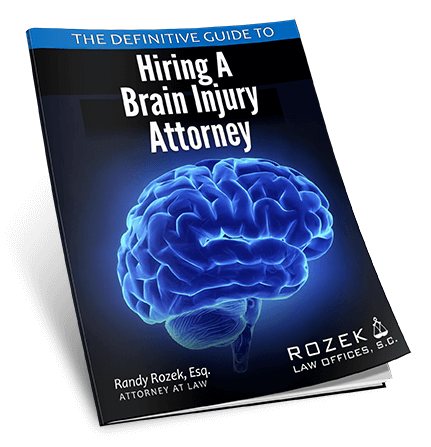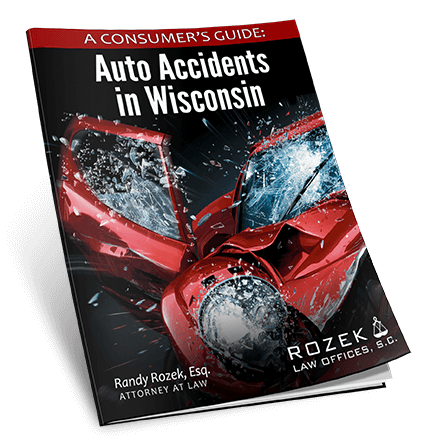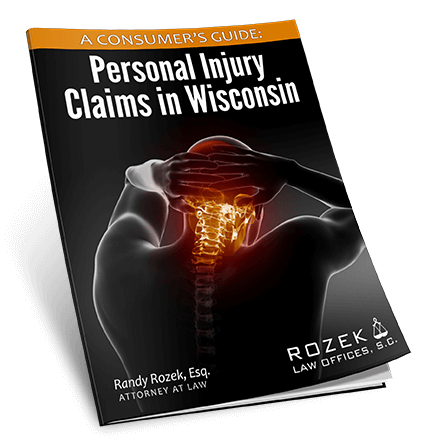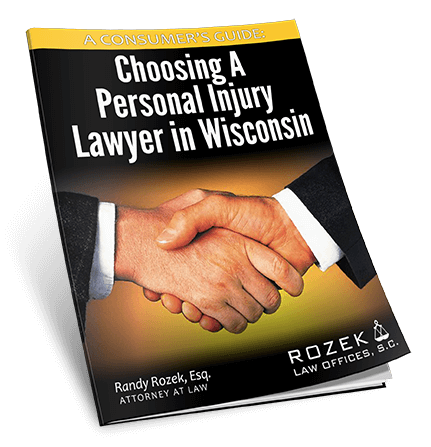Back Injury
Back Injury Lawyer in Wisconsin


Back Injuries are one of the most common types of injuries as a result of trauma due to Motor Vehicle Accidents , Bicycle Accidents , Truck Accidents and Pedestrian Accidents . Back Pain is also common in the majority of the population of adults over age 50.
Back Pain can be due to a multitude of specific types of Back Injuries, including the following:
- Herniated Lumbar Disks or Bulging Disks
- Fractured Lumbar Vertebrae
- Lumbar Ligament Sprain
- Low Back Strain
Wisconsin Back Injury Attorney
While we have offices in Milwaukee and Madison, we handle back injury cases that happen throughout Wisconsin.
The Lumbar Spine
consists of 5 bony vertebrae L1-L5. In between each vertebrae is a Disk. Each Disk
is composed of a fibrous material surrounding a gel-like substance. Imagine a jelly donut. Trauma to the Disk can result in the bulging of the fibrous material or it can result in the disk actually opening up and leaking out the gel-like substance.
Low Back Injuries
due to trauma resulting in disk injury can include any of the following:
- Herniated Disk
- Bulging Disk
- Ruptured Disk
- Compressed Disk
- Prolapsed Disk
- Slipped Disk
Herniate
means to “protrude through an abnormal body opening.” Unfortunately, in the medical community, there is not a clear consensus in the definition and distinction between herniation, rupture, bulge, compression, prolapse or slip. Generally, a Ruptured Disk
means that the disc has opened up, allowing the gel-like substance to leak out. A Bulging Disk
usually means just that, the Disk is bulging out in one or more areas. In either a Disk Bulge or a Disk Rupture, if there is aggravation to any of the nerves within the Spinal Column, the individual is likely to have extreme pain and possibly Radicular Symptoms, i.e. shooting pain or numbness into the buttocks, legs, and/or feet.
The most effective diagnostic device for detecting a Lumbar Disc problem is MRI. An MRI will reveal damage to the Discs, while an X-ray or CT scan will simply reveal damage to the bones.
Treatment for Disk Injury can range from rest, pain medication, muscle relaxers, physical therapy, medication, traction, chiropractic manipulation, injections, or surgery.
Fractured Vertebrae
A Fractured Vertebrae is a break in one or more of the five lumbar vertebrae. The type and extent of the fracture will dictate the different types of Low Back Pain. There are five different types of Fractured Vertebrae:
- Axial Burst Fracture – the Lumbar Vertebrae breaks in the front (anterior) and back (posterior) most often due to Car Accidents or Falls
- Compression Fracture – the front (anterior) of the Lumbar Vertebraebreaks while the back (posterior) of the Lumbar Vertebrae remains intact
- Fracture-Dislocation – the Lumbar Vertebrae moves center of the surrounding Lumbar Vertebrae
- Flexion Fracture or Distraction Fracture – the Lumbar Vertebrae is pulled apart
- Transverse Process Fracture – a Lumbar Vertebrae caused by rotational forces
Lumbar Vertebrae Fracture Treatment
can consist of conservative treatment, such as wearing a back brace, pain medication, bed rest and/or physical therapy. Surgery is often necessary in more serious cases of Lumbar Vertebrae Fractures. Bone Fragments often cause additional problems in Lumbar Vertebrae Fractures
and usually have to be surgically removed.
Lumbar Ligament Sprains
A Lumbar Ligament Sprain
is an injury to the Ligament. A Lumbar Ligament
is a strong band of tissue connecting two Lumbar Disks. Ligaments are more resistant to stretching than other soft-tissues in the Lumbar Spine. A Lumbar Ligament Sprain
is the unnatural stretching and tearing of a Lumbar Ligament.
Low Back Strain
A Low Back Strain
is damage to the soft-tissues in the Lumbar Spine. This can include damage to the tendons and muscles in the Low Back.
Lumbar Ligament Sprains and Low Back Strains are usually treated similarly in that physicians will likely try rest, pain medication, muscle relaxers, physical therapy, heat therapy, acupuncture and/or chiropractic treatment.
Request Your Free eBook
Our office has provided information regarding the different types of Wisconsin Personal Injury Accidents that we have experience handling.
Wisconsin Accidents
Wisconsin Personal Injuries
Ready to get started?
Call us at 414-374-4444
Main Office Location
Rozek Law Offices, SC
3970 N Oakland Ave Ste 604
Milwaukee, Wisconsin 53211
(414) 374-4444
Additional Client Meeting Location
Rozek Law Offices - Madison
2810 Crossroads Dr Ste 4046
Madison, Wisconsin 53718
(608) 208-1147
Recent Blog Posts
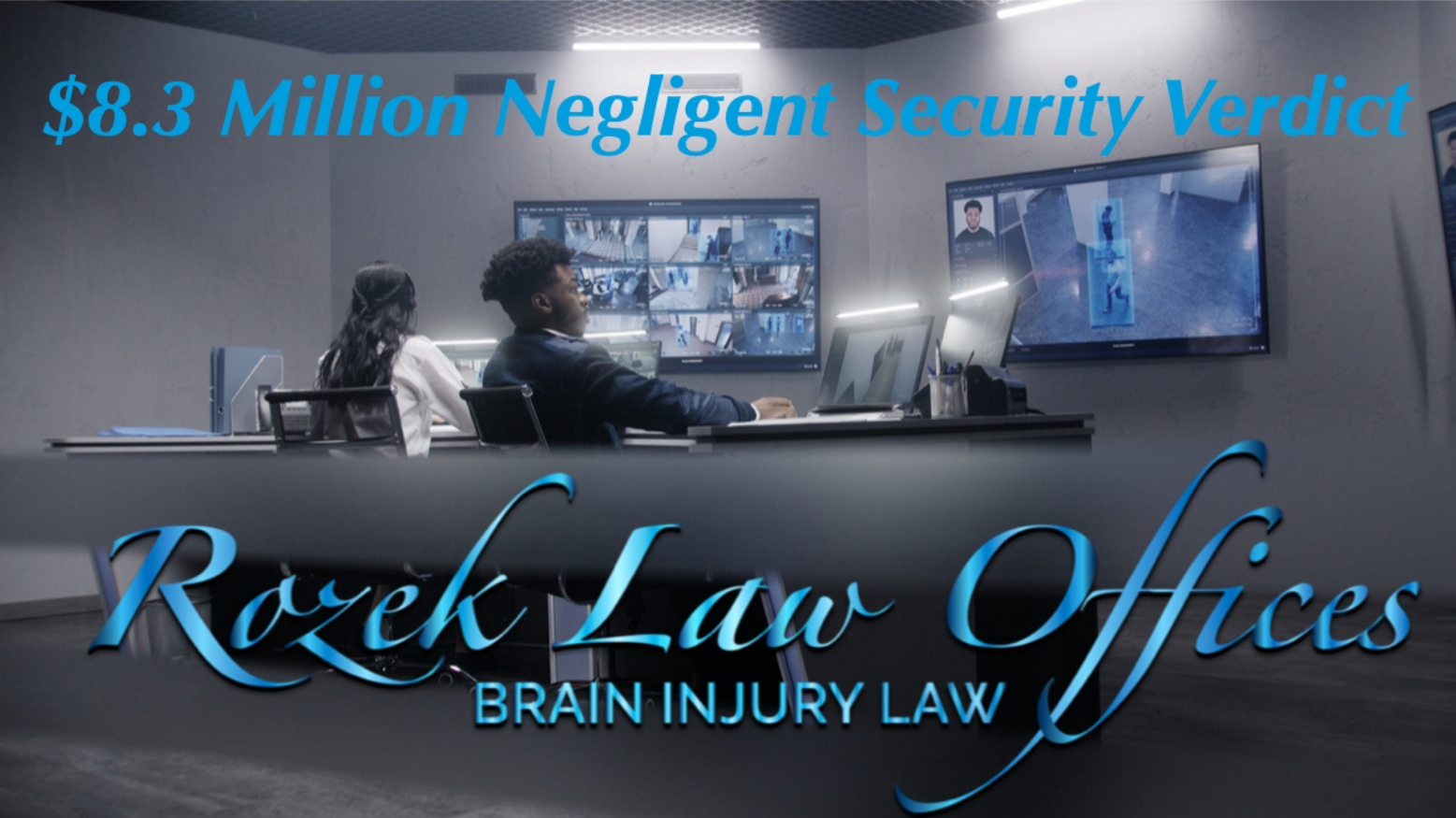
By Randy Rozek
•
27 Oct, 2023
After an ongoing struggle to bring justice to the victim of an attack at a Wisconsin diabetes clinic, attorney Randy Rozek of Rozek Law Offices, S.C. has won an $8.3 million victory in which a jury found hospital security at fault for the attack and the client’s resulting injuries. In 2014, Rozek’s client was in the waiting room of the diabetes clinic at a local children’s hospital when a 16-year-old girl with a history of violence viciously assaulted her. The victim, who was accompanied by her two young children, was “punched repeatedly in the face and head, had chunks of hair pulled from her head and was struck in the head with a chair,” Rozek said. The children, aged 9 and 11 at the time, were so frightened by the brutal beating that they fled to a stairwell for safety, fearing their mother had been killed by the attacker and that they would be next if the attacker was to find them. Rozek’s client survived the assault, but still struggles with symptoms of a TBI (traumatic brain injury) and PTSD (post-traumatic stress disorder) following the attack.

By Jayne Zabrowski
•
21 Jul, 2020
Congratulations to Attorney Randy Rozek on his election to be Chair of the American Association for Justice’s Traumatic Brain Injury Litigation Group. The American Association for Justice (AAJ) is the largest group of legal advocates for justice in the country. According to AAJ: “For over 70 years, AAJ has successfully defended Americans’ right to trial by jury and continues to fight every day to protect our practices, our clients’ rights, and our civil justice system.” The 3 pillars of AAJ are Community, Advocacy and Education. AAJ has over 50,000 members and has several different Litigation Groups made up of attorneys that specialize in different areas of the law. The Traumatic Brain Injury Litigation Group (TBILG) was established in 1991 in order to allow attorneys that handle Traumatic Brain Injury cases the ability to share their knowledge, techniques and experience. The TBILG has over 300 members from around the world. Pre-COVID19, the TBILG will typically put on two or three in-person conferences throughout the year and always had a reputation for bringing in great speakers and having a great turnout. Randy was asked about his election as Chair of the TBILG and had this to say: “It means a lot to me that my fellow trial lawyer colleagues bestowed upon my the great honor of leading the Traumatic Brain Injury Litigation Group for the next year. Our group is made up of some of the greatest TBI lawyers in the country, if not the world. I am proud to lead a group of great lawyers that have dedicated their practices to advocate for those individuals that have suffered from the devastating effects of brain injuries.” Rozek Law Offices, S.C. 3970 N Oakland Ave Ste 604 Milwaukee, Wisconsin 53211 (414) 374-4444 https://www.rozeklaw.com/

By Randy Rozek
•
18 Mar, 2020
The vast majority of interactions between clients and Rozek Law Offices is not in-person contact. Typically, however, the initial contact between a potential client and Attorney Rozek would be an in person meeting. Due to the health concerns regarding the Coronavirus (COVID-19), Rozek Law Offices has implemented new technology that will allow potential clients to retain Attorney Rozek and Rozek Law Offices without an in-person meeting. A typical new client relationship with Rozek Law Offices now looks like the following:

By Randy Rozek
•
20 Aug, 2019
MILWAUKEE, WI – We are pleased to announce that Randy Rozek, Rozek Law Offices, S. C., has been selected to the Brain Injury Association of America’s Brain Injury Preferred Attorneys Program. This is an exclusive partnership between the nation’s oldest and largest brain injury advocacy organization and one of Wisconsin’s foremost brain injury law firms. […]
Connect with Us:
Office Hours:
Monday - Friday
8:30am - 5:00pm

